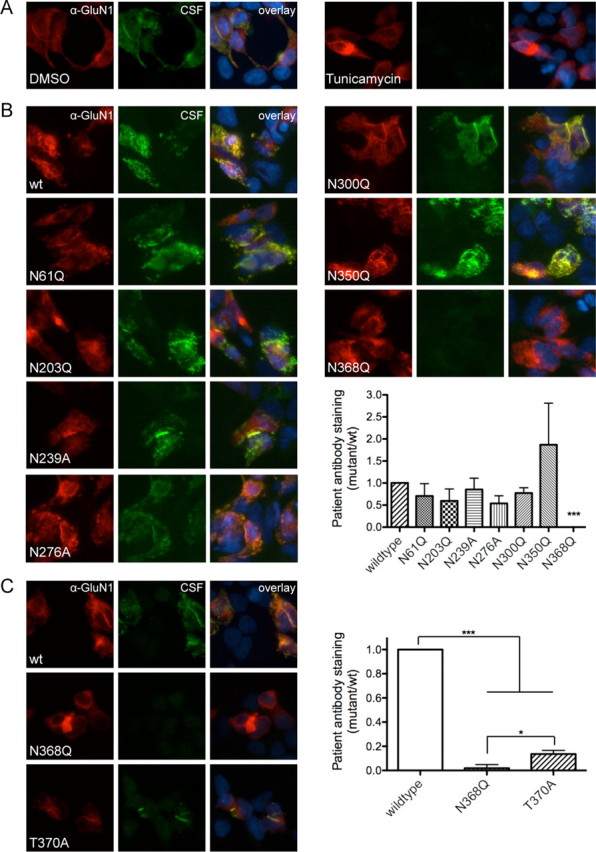Figure 2.

GluN1–N368 affects epitope formation, independent of glycosylation state. A, Blocking N-linked glycosylation with tunicamycin (2 μg/ml) blocks antibody staining (DMSO = 0.605 ± 0.117 AU, tunicamycin = −0.016 ± 0.020 AU (where AU is arbitrary units); n = 10 patients, p < 0.001, t test with Welch's correction). B, Mutation of six of the seven N-linked glycosylation sites within the ATD of GluN1 does not affect staining by patients' antibodies, while mutation of N368 to Q blocks antibody staining (n = 6–9 patients; wild-type vs N368Q, p < 0.001; wild-type vs all others, p > 0.05; Kruskal–Wallis test). C, Blocking N-linked glycosylation of N368 by mutating T370 to A, however, decreases but does not abolish antibody staining (n = 11 patients; *p < 0.05, one-way ANOVA plus Tukey's post hoc testing, ***p < 0.001).
